Starting a career in surface design or illustration can be exciting, inspiring, and fulfilling. It can also be confusing, overwhelming, and financially draining. I’ve experienced all of these ups and downs since starting my business 3 years ago.
To make it all work, I take on projects as a marketing consultant. While this is sometimes a lot to juggle, I’ve found the two pursuits often complement each other. This post looks at the challenges and benefits of working in an unrelated field, and some hints and tips for balancing the two.
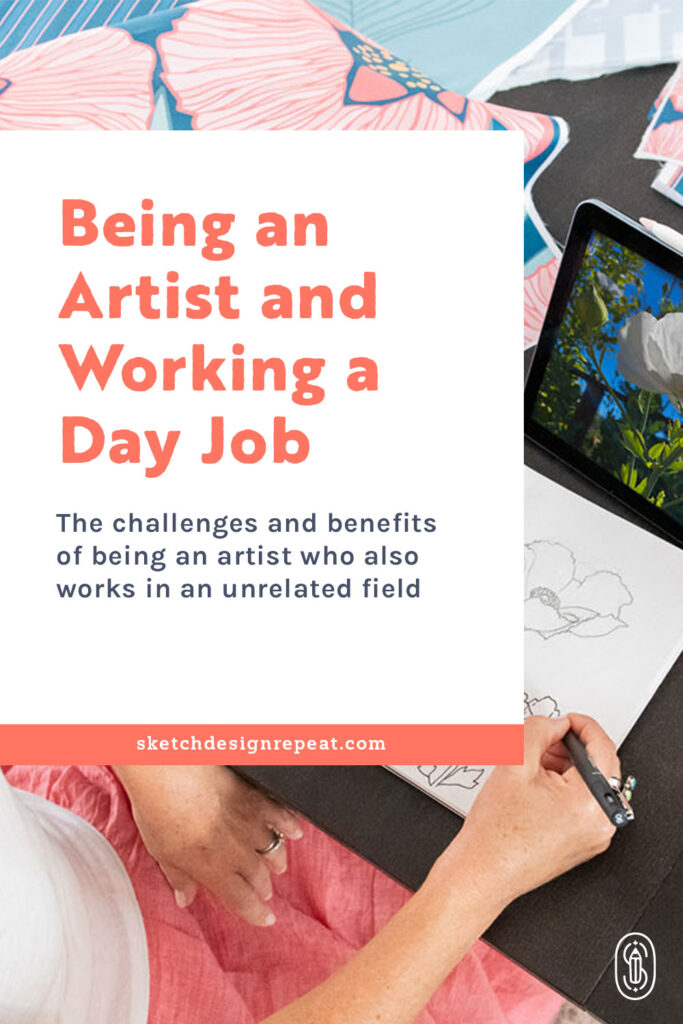
Discovering Surface Design
Like many people, I discovered surface pattern design during the early days of the pandemic in 2020 when I had a lot of extra time on my hands and wanted to explore my creative side. Surface pattern design held the promise of a dream career, combining my love of drawing and home décor with my marketing background.
I dove headfirst into classes learning this new industry including many wonderful and informative classes by Shannon McNab here at Sketch Design Repeat. I was continually inspired during this period and had so many ideas and plans to build my business.
I spent that first year learning the technical side of pattern making and improving my Illustrator and Photoshop skills. I conducted research on the different categories of surface design and spent weeks designing my business plan and working behind the scenes on my branding, website, and online store.
I was full of hope about the income I would soon generate through licensing deals and commissioned work. I started posting my designs on Spoonflower and other POD sites and was thrilled to make a few small sales.
About a year after launching my business, Wild Azure Design, I had a few revenue streams from licensing sales, commission work, POD sites, Etsy sales, craft fairs and wholesale customers. I was so happy to be making income as an artist, but I was also feeling overwhelmed and a little burnt out. Taking a closer look at the actual profits and realizing how little I was bringing in was honestly a little depressing.
I knew it would take time to establish and grow my business, but the financial hit of giving up my day job was taking a toll on our family of four. I needed to re-evaluate what I wanted to get out of this career and what we needed financially to survive as a family. I felt guilty and a little ashamed that I wasn’t bringing in more income with all the effort I was expending.
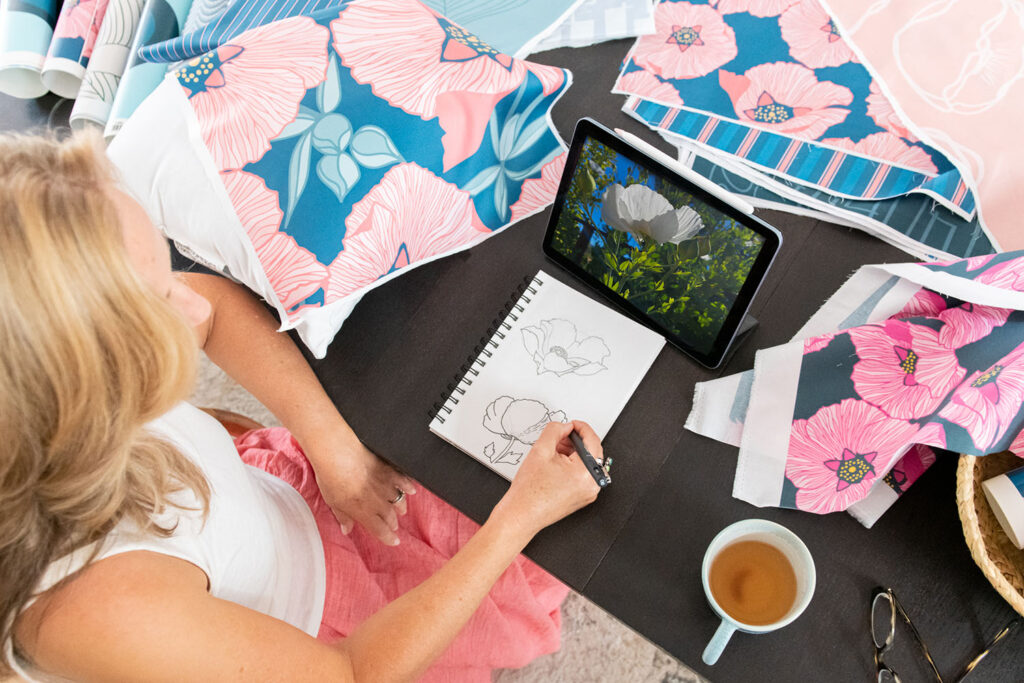
Financial Reality
While money is a topic that is often uncomfortable to discuss, it’s important to understand what sort of income to realistically expect in this industry. Shannon’s annual Surface Design Industry Survey is a great source of information on this topic. It’s clear after looking at the survey results that many people supplement their incomes with other jobs, or have a partner who contributes financially.
After reading the results of the survey and talking to a lot of other surface designers, I realized I was not alone. Because there are so many classes promoting how to make money through surface design, I thought if I wasn’t making enough to financially contribute to my family, I was a failure. But for those of us who want to pursue creative lives, it’s important to understand that there are countless ways to achieve this.
Author Elizabeth Gilbert has some great thoughts on living a creative life where she differentiates between a job, a career, a hobby, and a vocation. She points out that most great artists in history usually had a “day job.” Her perspective helped me think differently about the pressure I had put on myself to earn a six-figure income as a surface designer.
Making It Work
Which brings me to my great epiphany: I can use my background in marketing to take on consulting and contract jobs while I also pursue a creative career in surface design and illustration. Earth shattering. I know.
But it changed my “either / or” thinking. I could now see a way forward with “both / and” where I can both pursue my creative interests AND provide the income our family needs financially through other projects.)
For the past year, I’ve split my time between marketing consulting projects and my creative business. I’ve learned a few tricks along the way that have helped me juggle these two roles and hope that sharing my experience can help others find a balance that works for them.
Benefits
There are many benefits to working in another field while pursuing a creative business. Additional income is the obvious benefit, but once the pressure to make money from my art was reduced, I felt more freedom to explore projects I was interested in, not just projects that were the most lucrative. In a strange way, taking on more traditional work freed my creative side.
I found that having other projects also helped me structure my days. Ironically, when I had more time to focus on my own surface design business, I was more scattered. There was always something new to try, a new class to take, a new revenue stream to explore.
By having less time, I had to prioritize what really worked and what I really wanted to do.
Working in a separate, but related field like marketing has helped me develop complementary skills that benefit my surface design business. For example, I manage social media and email campaigns for some of my marketing clients and I’ve been able to apply some of these learnings to my art business.
My network has also expanded through my marketing work. I’ve picked up design and illustration projects for some of my marketing clients since there’s a synergy between these two fields.
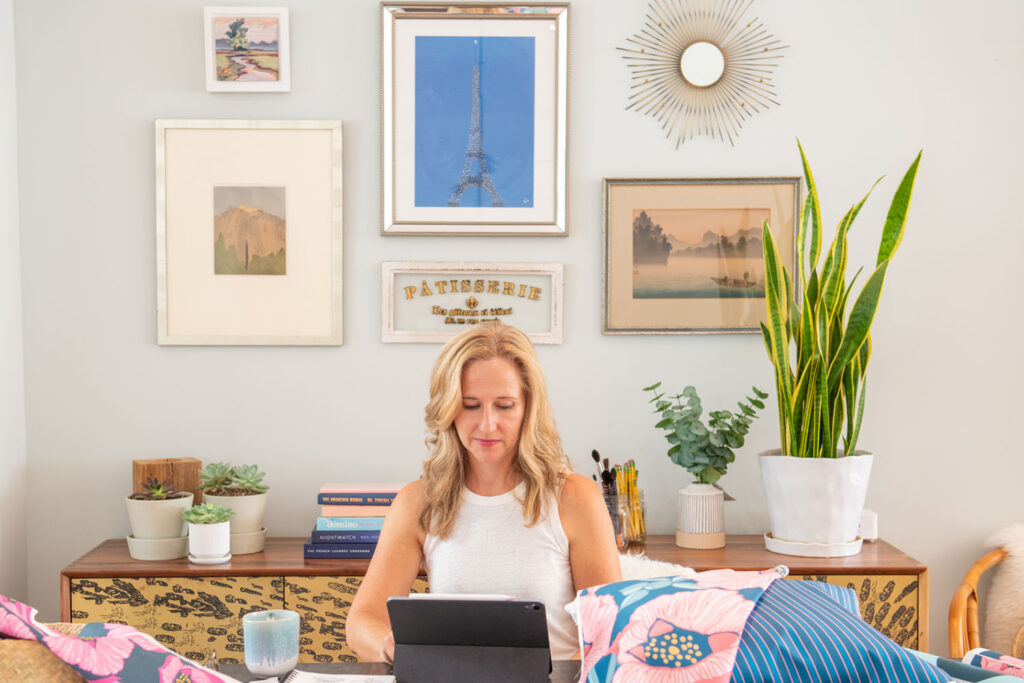
Challenges
Striking a balance while working multiple jobs is not without its challenges. For me, the most difficult part is not always having control over my own schedule. My marketing work occasionally takes over when I have larger projects. I’m always grateful for the income during these periods, but I’m frustrated when I can’t spend as much time on my own creative pursuits.
When these periods come up, I remind myself that, while I may be busy now, this work allows me the freedom to follow my creative pursuits in the long run. I also try to still sneak in some creative time each week. This could be anything from going on a walk and taking reference photos of plants to sketching in Procreate in the evening.
These little creative moments make me feel connected to my creative work and keep the momentum going until I have more time.
Related Article: Juggling Your Art Business & Family Life
Hints and Tips
With multiple priorities, unpredictable schedules and general life juggling, there are a few strategies that have helped keep me productive and sane.
Scheduling Systems
There are so many options for scheduling systems, from a simple Google calendar to a feature rich project management platform like Shannon’s favorite, Airtable [AFFILIATE LINK] and her Airtable for Artists class can help you leverage it too.
Whatever you choose, finding a system that works can be a lifesaver. More important than the particular system is using it consistently. I’ve tried my hardest, but I’m not one of those people who has a strict routine keeping everything organized. Because of the nature of my work and my personality, each week is slightly (or very) different.
However, I’m still able to use a few systems that work to keep me on track. One of my most effective systems is a simple calendar alert on Monday morning and Friday afternoon. Since my schedule and priorities change each week, these weekly check-ins keep me sane.
At the start of each week, I take 10–15 minutes to look at the week ahead and write down my top 3–5 priorities. If I need to focus on specific projects or schedule around activities, this is when I block out time to get things done.
At the end of the week, I review these priorities, note their progress, and add anything new to the list that needs to be done in the following week. These two weekly check-ins keep me grounded when there are multiple priorities, kid’s activities, clients, and personal projects going on.
Workflow and Batching
I’m a big fan of batching work to save time, especially in my creative work. Most of my creative work follows a similar flow that lends itself to batching. These steps include something like concepting/brainstorming, research/exploration, production, marketing.
Recently, I’ve gotten into print making and carving stamps for art prints and cards. Rather than making one image at a time, I was able to make a series of five in about half the time it would have taken me to create them individually by batching the workflow. Here’s an example of how I apply these steps to printmaking.
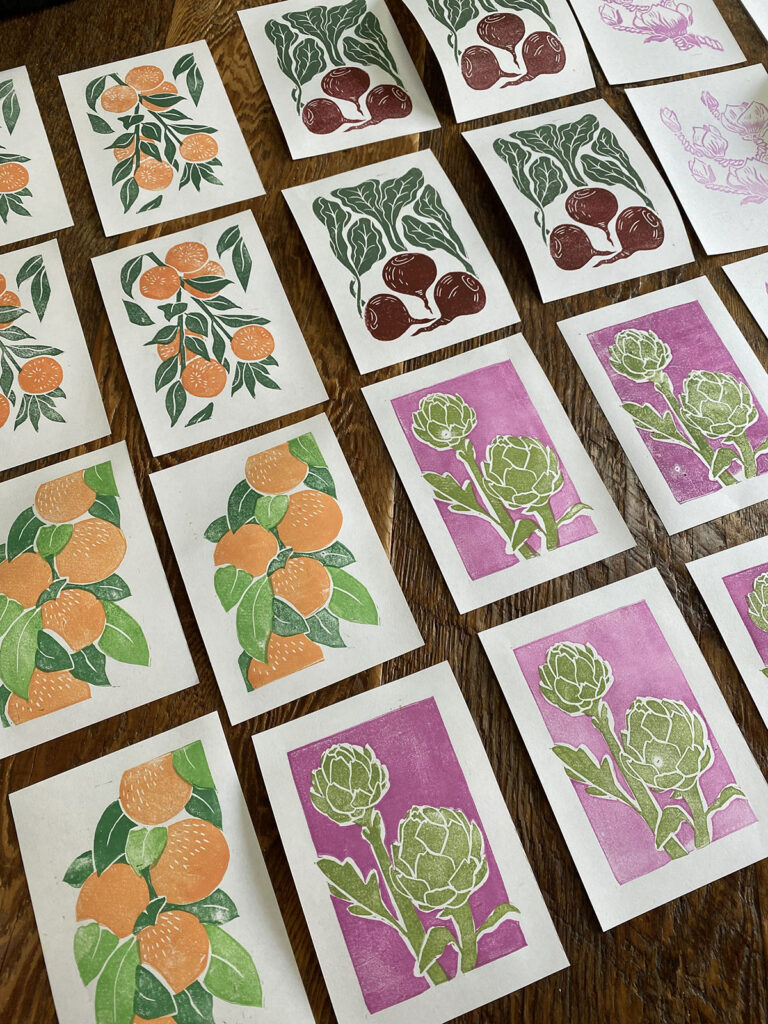
Concepting / Brainstorming: For my latest print series, I brainstormed a bunch of spring flowers and came up with a final list of about ten flowers that I wanted to print. I sketched some loose compositions with different arrangements to see which ones would work best as prints. After developing a number of options, I narrowed my original list down to five.
Research / Exploration: With five final designs in mind, I spent time looking at reference materials and refining my compositions. I did most of this work in Procreate, working out which sections would be carved, which would be printed, and what details I would include.
Production: This is where I start working with my final materials. For the prints, I trace the final composition and transfer the drawing to a carving block and carve each layer in the print. I usually experiment with ink stamps to play with colors and make sure the carvings are accurate before rolling and printing with ink. For the final piece, I mix and roll colored ink onto the stamps and create my original prints.
Marketing: This is where batching really saves time. I can repeat the first few steps until I have a series of 10–20 pieces that I want to use on various products, like art prints or cards. With the final art complete, I set aside a few hours to scan and clean up digital files and place them in product templates. Once the products are designed, I spend a few hours creating mock-ups and marketing images and then upload everything to my online shop, website, Pinterest page, and other marketing channels.
I can work on multiple pieces at the same time in each of these steps, so when I’m scheduling my week, I look for blocks of time when I can focus on one of the steps in the workflow and over the course of a month I can have 10 new pieces created.
(Almost) Daily Creative Practice
Since my schedule is different almost every day, I try to have a few constants. A daily creative practice keeps me moving forward even when I can’t commit to big projects all the time. Sometimes all I can get out are a few thumbnails or ideas for patterns or illustrations. Other days, I can spend hours exploring and playing with different materials.
As long as I’m doing something most days, I can see the progress and growth. This has been especially important when I’m pulled in too many directions, or get frustrated when I can’t spend as much time as I’d like on my art.
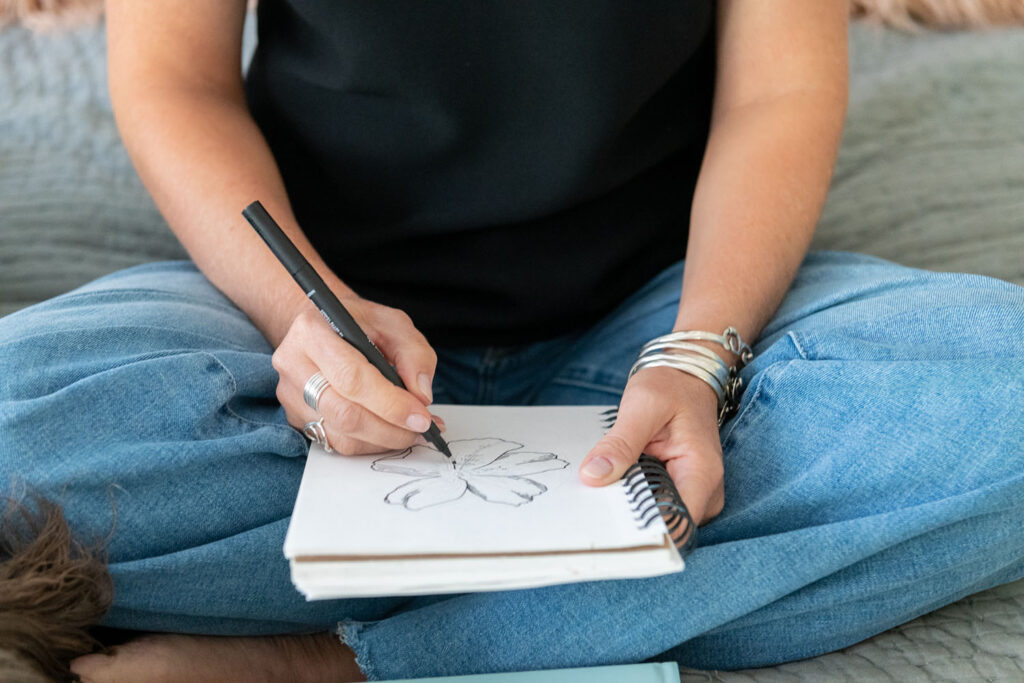
Give Yourself a Break
There are days when I don’t spend any time on my art or creative business. During these times, it’s easy to compare myself to others and feel like I’m not doing enough. So my last tip is to give yourself some grace. I try to take a moment to remember that I’m creating the life that I want, not the life that others have. I’m working with purpose based on what works for me, and for my family. And if it starts to feel like it’s not working, I can change it.
You Can Do It!
Living a creative life is so rewarding. Even if it doesn’t look like what everyone else is doing, finding your own path is possible. Combining a creative business with work in unrelated fields provides a great balance between financial stability and creative fulfillment.
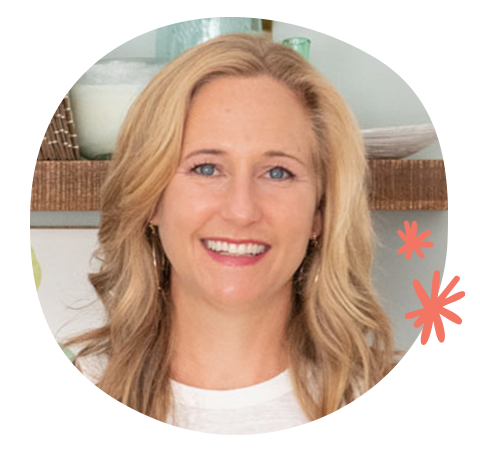
Written by Kelly Miller
Website: www.wildazuredesign.com
Instagram: @wildazure
Kelly Miller is an illustrator, pattern designer and the artist behind Wild Azure Design. Her designs are inspired by the outdoors, travel and a love of adventure. The Wild Azure style is modern, yet playful, incorporating loose expressive watercolor, with hand drawn details.
Thank you so much for this article, Kelly. It’s one of the more helpful I’ve found, in terms of how to work with a temperament and a schedule that don’t lend themselves to super detailed planning or consistency. I feel like I might be able to realistically ACTUALLY incorporate some of what you’re suggesting, without flaming out. Like the twice-weekly check-ins. Excited to start! Thank you.